Osmia lignaria

Quick Facts
- Native to North America, above 30°N
- One generation per year and flies in early spring
- Has a wide host plant range that includes Roseaceae, Boraginaceae, Plantaginaceae, Limnanthaceae, Brassicaeae, Sapindaceae, Fabaceae and others
- Nests in cavities that are 7 to 8 mm in diameter
- Uses mud to make cell partitions and nest plug
- An excellent pollinator of almond, cherry, plum, apple, pear, and cane berry
The blue orchard bee or orchard mason bee (Osmia lignaria) is native to North America and can be managed to pollinate a wide range of crops. Almonds, cherries, plums, apples, pears, blackberries, raspberries, strawberries, gooseberries are some of the crops that the blue orchard bee pollinates with great efficiency. These bees will also visit and pollinate a wide variety of wildflowers (such as Phacelia, lupines, Chinese houses, baby blue eyes and meadowfoam to name a few) and native shrubs (for instance deerbrush, manzanita, mountain mahogany and western redbud).
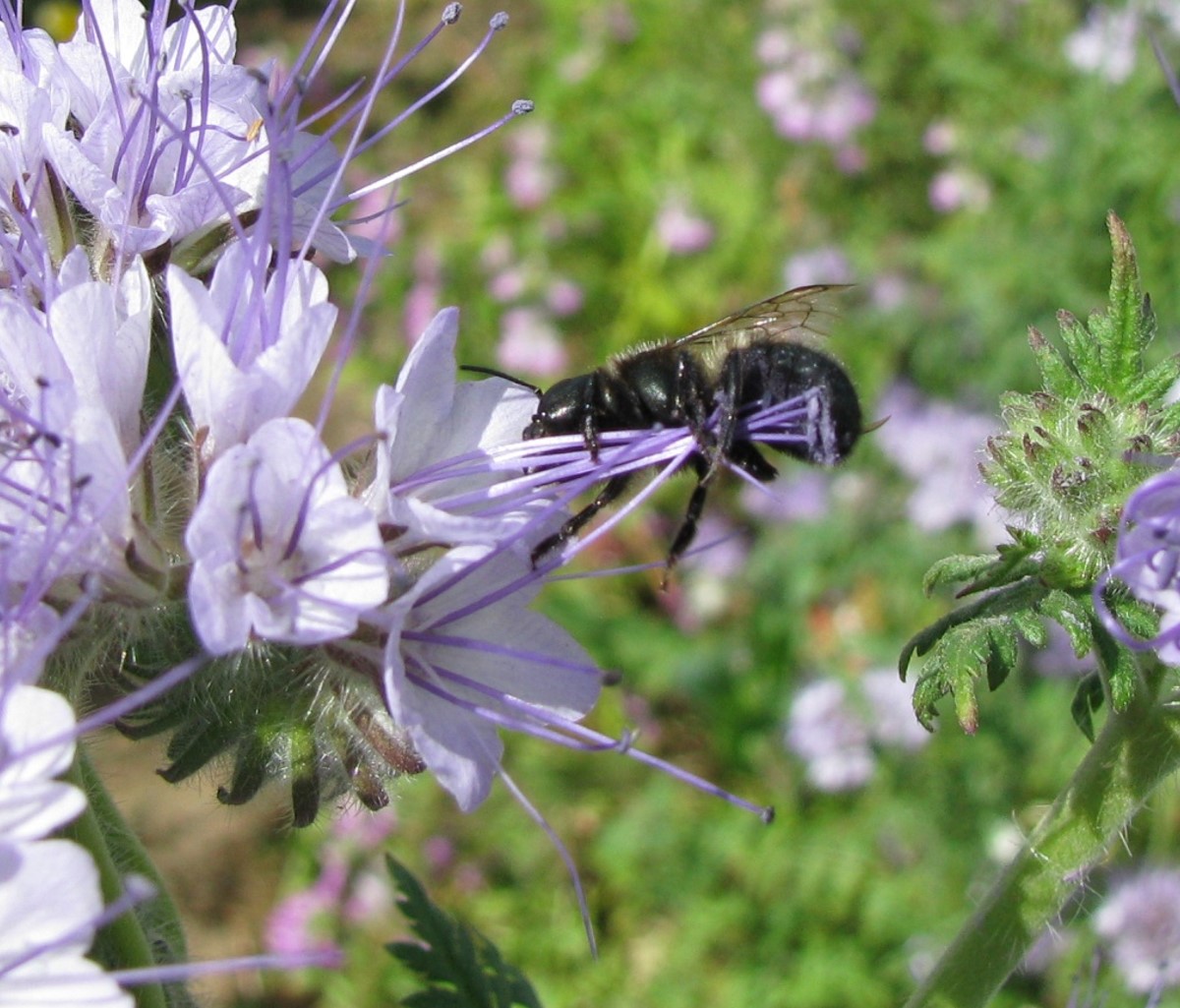
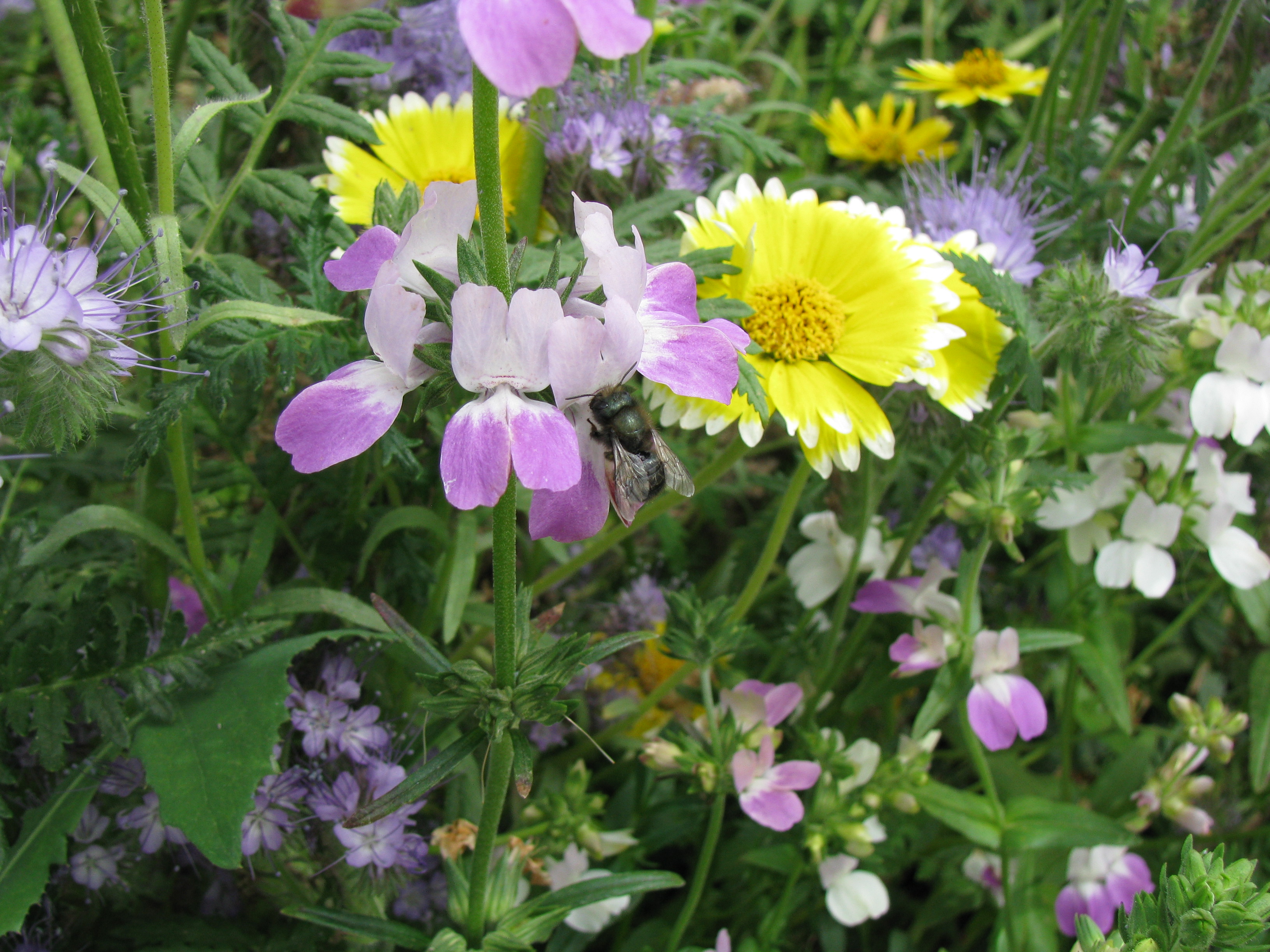
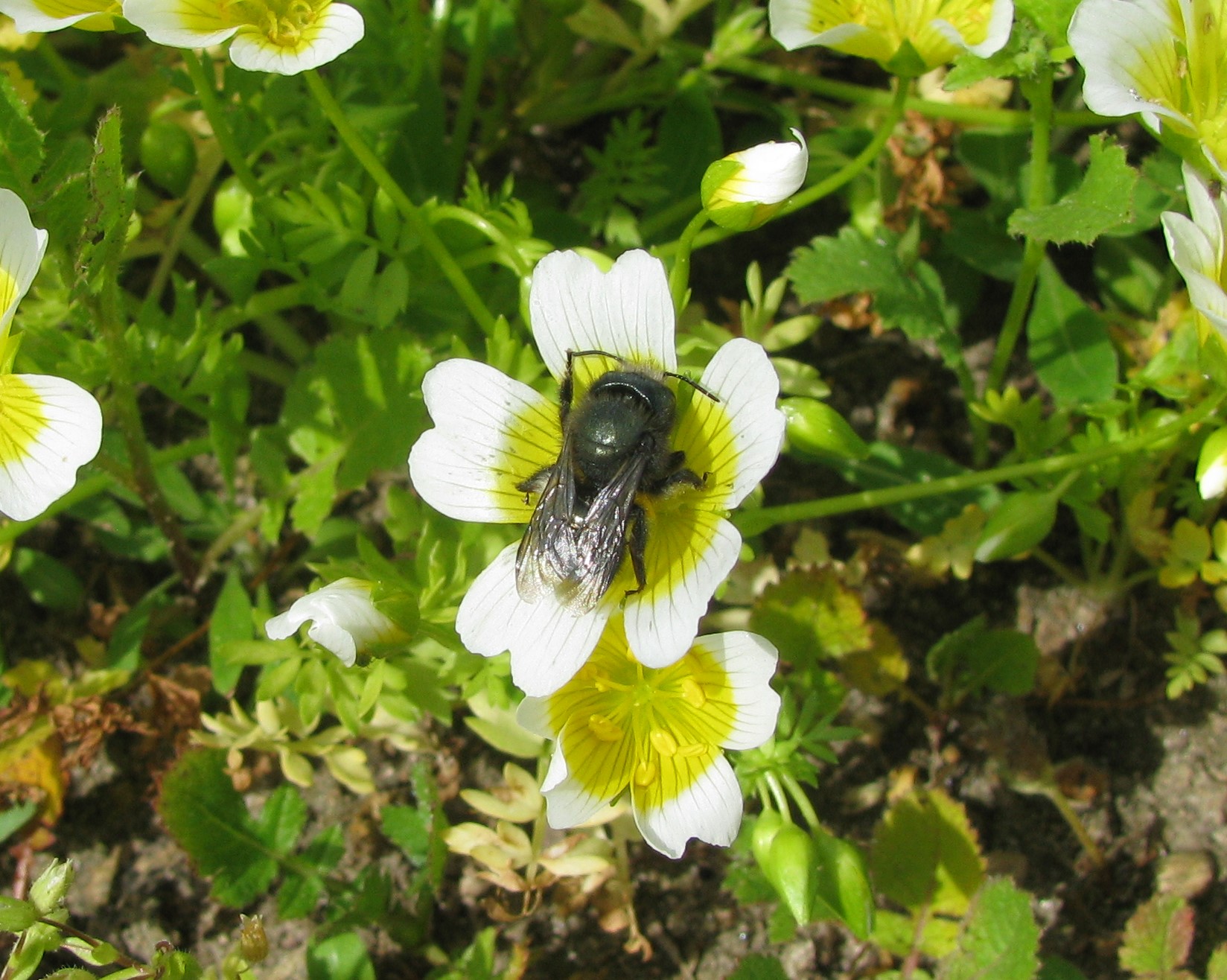
Blue orchard bee females gathering pollen from Phacelia (left), Collinsia (center) and Limnanthes (right).
These bees are solitary which means they do not cooperatively raise their young. There are no queens or workers and they do not make honey or wax. Instead, each female bee builds its own nest in a cavity. In the wild, they look for beetle holes or cracks in wood. In the cavity they make individual compartments for their offspring separated by walls of mud, which is why they are also called mason bees. In each compartment the mother bee packs a supply of pollen and nectar that she lays an egg on.
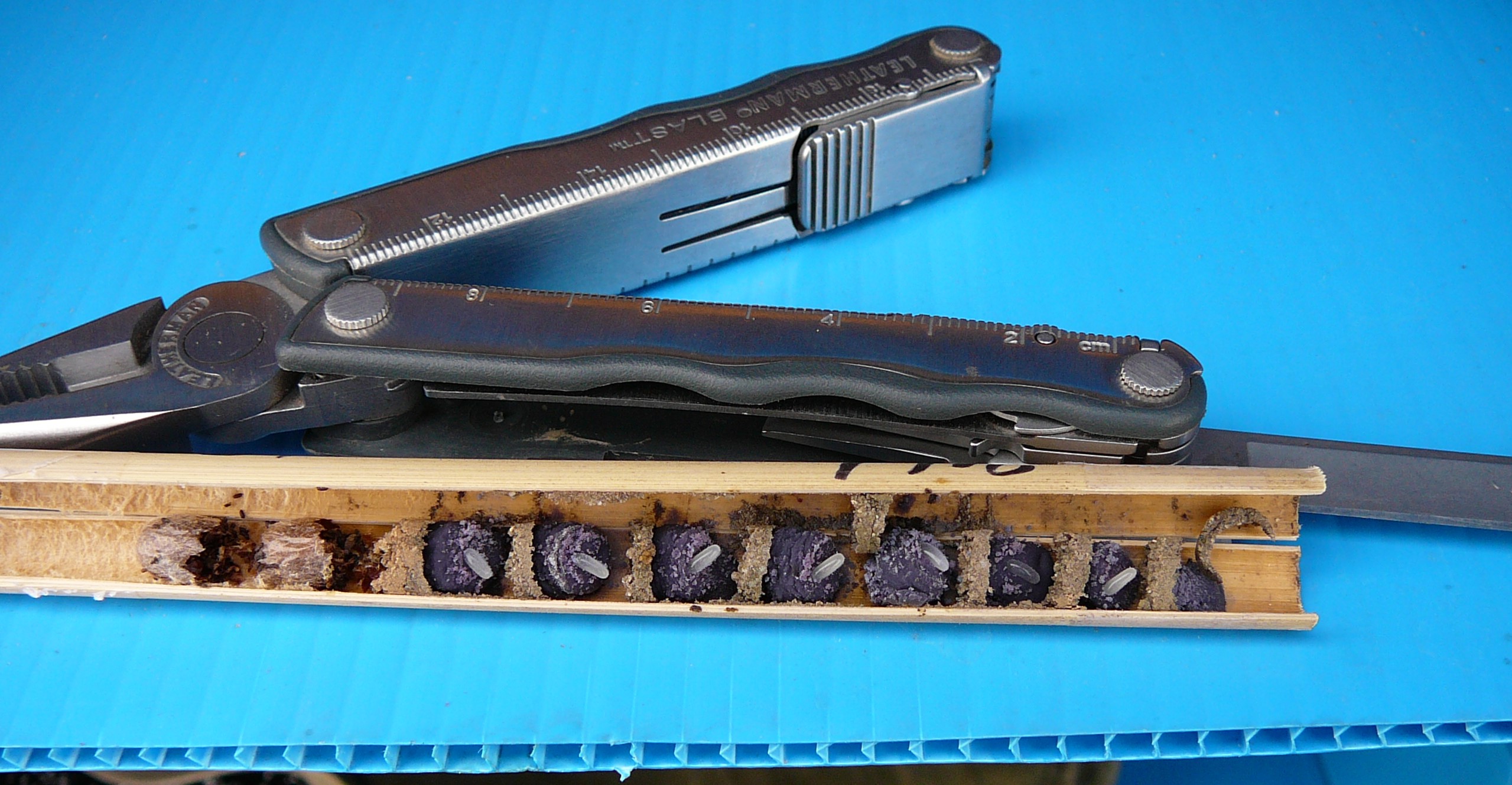
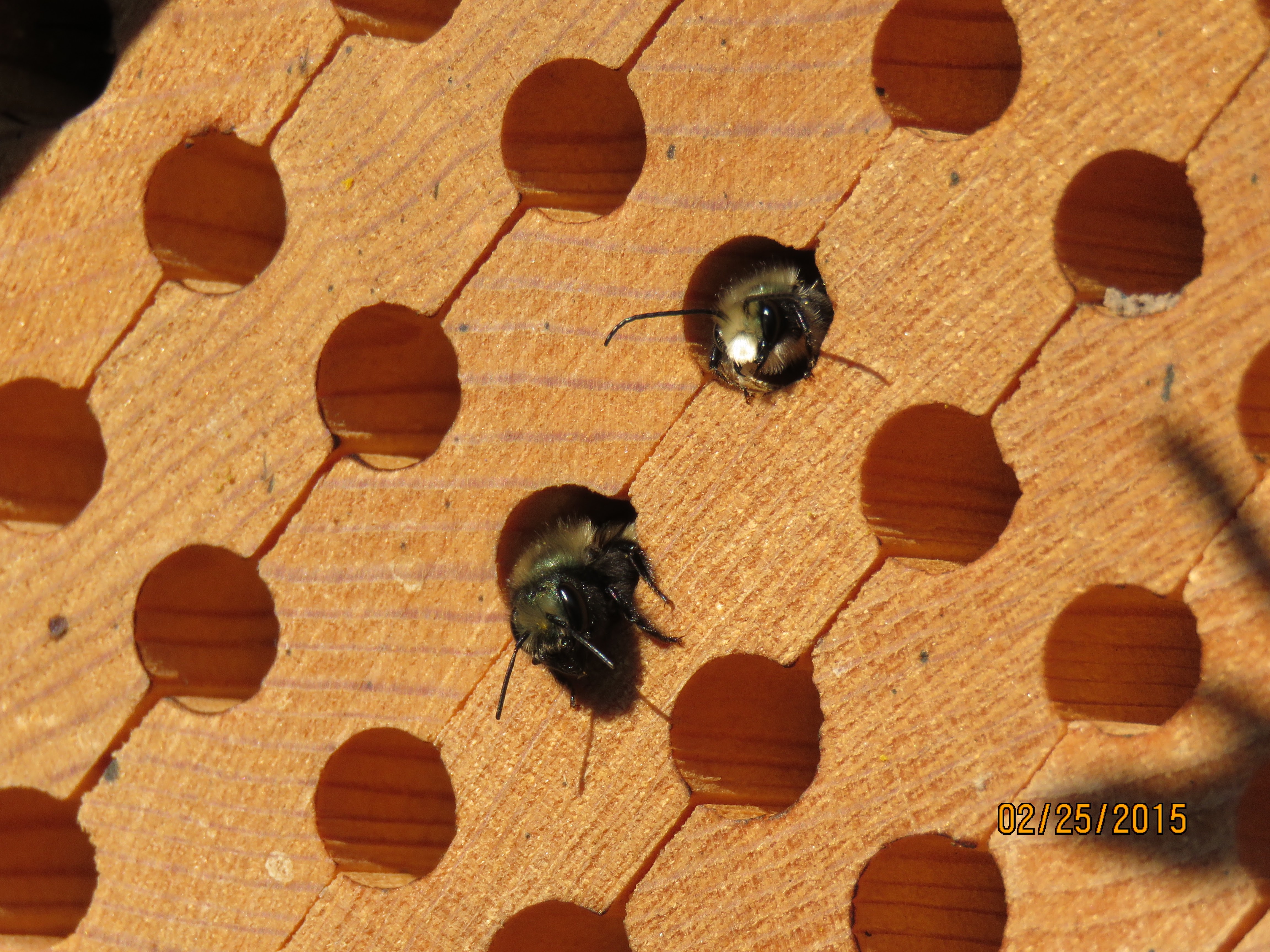
Left: A blue orchard bee nest showing mud partitions, pollen loaves (purple Phacelia pollen) and eggs. The three compartments on the right are males and the five on the left are females. Right: A male (upper) and female (lower) blue orchard bee in a wood laminate nesting structure.
The egg hatches and the larvae will consume the food provision. The larva then pupates and transforms into an adult bee which will emerge the following spring. While they are not social, they often nest near other bees. The adult bees will fly and nest for up to six weeks in the early spring.
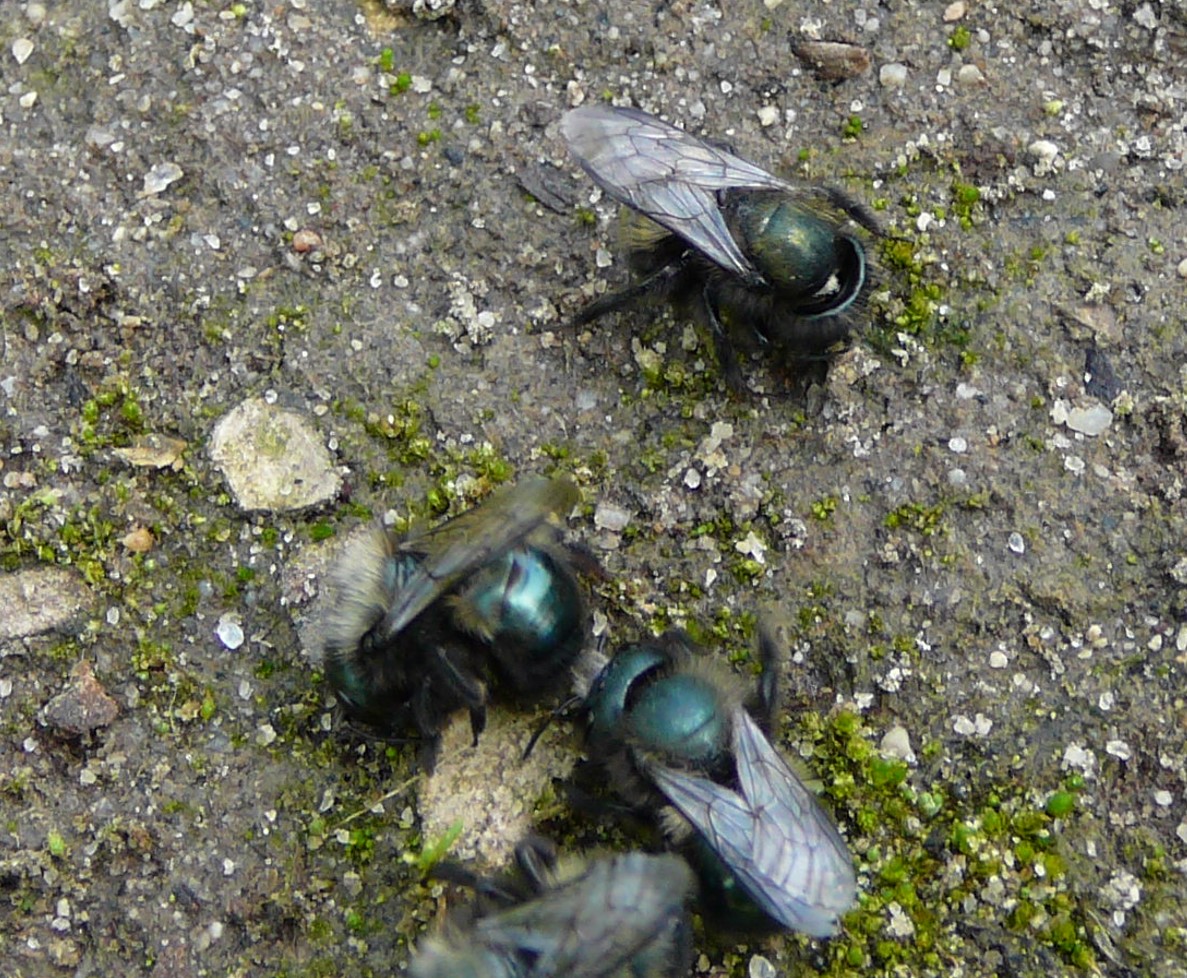
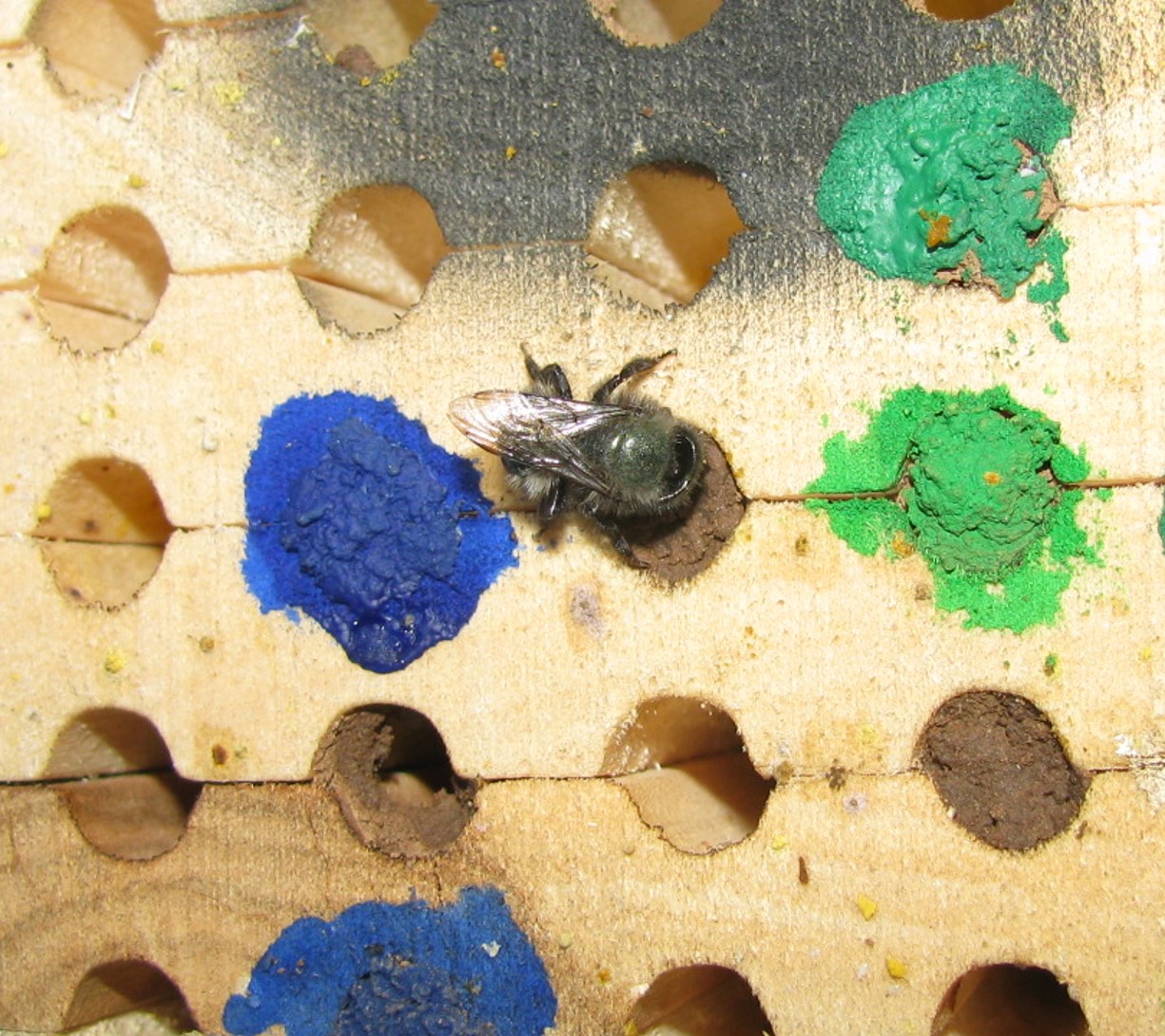
Left: Blue orchard bee females gathering moist soil. Right: A female applies moist soil to the entrance of her nest to seal it from the elements and predators. Poster paint has been applied to other completed nests.
Nesting materials can be supplied by drilled holes in wood, paper tubes or grooved wooden boards. Cavities that are 6 inches deep (15 cm) and 5/16 inch in diameter (7.5 mm) are readily accepted and produce an optimal sex ratio. When the bees have finished nesting, the nests can be left in a cool shady location for the summer and then refrigerated in the fall. During the winter, it is a good practice to open the nests and remove any predators, parasites or dead larvae. They can then be brought out of refrigeration in the spring to emerge and begin the cycle again.
Foothill Bee Ranch blue orchard bees are from the foothills of the Sierra Nevada mountains in California. Our bees are adapted to California conditions and we only sell to California growers and gardeners. Please contact me for O. lignaria availability.
Selected References:
Bosch, J., and Kemp, W. P. 2001. How to manage the blue orchard bee as an orchard pollinator. Sustainable Agriculture Network. Beltsville, Maryland.
Peterson, S. 2013. Managing blue orchard bees in pollination. Bee Culture. Nov. Issue, p. 25-29.
Peterson, S. S. & D. R. Artz. 2014. Production of solitary bees for pollination in the United States. In Mass Production of Beneficial Organisms: Invertebrates and Entomopathogens. (eds. J. A. Morales-Ramos, M. G. Rojas & D. I. Shapiro-Ilan), Elsevier Science, London.
Torchio, P. F. 2003. Development of Osmia lignaria (Hymenoptera: Megachilidae) as a managed pollinator of apple and almond crops: a case history. In “For Nonnative Crops, Whence Pollinators of the Future?” (K. Strickler and J. H. Cane, Eds.), pp. 67-84. Entomological Society of America, Lanham, Maryland.